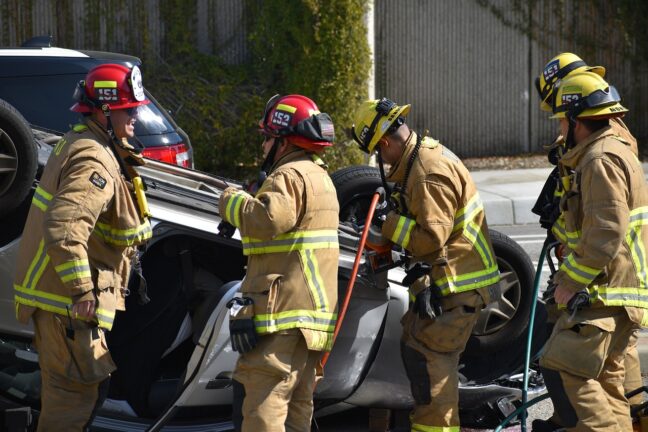EU lawmakers have approved changes to driving licence rules aimed at reducing the devastating toll of road deaths across Europe. The updates include new requirements for novice drivers, digital licences alongside traditional cards, and tougher cross-border bans for serious offenders. The goal? To ensure that hitting the highway to the sound of heavy metal thunder stays as safe as it is thrilling. With Parliament and the Council giving the green light, these changes are set to roll out over the next few years.
On Tuesday, 21 October 2025, the European Parliament approved updated EU driving licence rules aimed at enhancing road safety and reducing the nearly 20,000 annual fatalities on European roads. The changes build on a broader 2023 initiative to improve safety for all road users and pursue the EU’s ambitious goal of zero road deaths by 2050.
Vision Zero
Known as “Vision Zero”, this goal is highly ambitious and far from guaranteed. While some countries and cities have made impressive progress in cutting traffic fatalities through better infrastructure, stricter rules, education, and technological advances, completely eliminating all road deaths across a continent remains a huge challenge. Factors such as human behaviour, increasing vehicle numbers, and unpredictable conditions all add complexity.
However, with ongoing innovations in vehicle safety, automation, and digital systems over the next 25 years, the way we drive and how roads function could change significantly—potentially bringing the vision closer to reality.
What should improve?
EP rapporteur on driving licences Jutta Paulus (Greens/DEU) highlighted some of the improvements expected once the new rules come into force:
“By 2030 the new European Driving Licence Directive will introduce a digital driving licence, while giving citizens full freedom of choice between an app and a physical card. Driving education will contain more elements for the safety of pedestrians and cyclists. Volunteers such as firefighters and rescue workers will be able to drive emergency vehicles more easily, while new rules on training and recognition will make transport professions more attractive and accessible. Citizens across Europe will directly benefit from these tangible improvements.”
You might be interested
Ultimately, Vision Zero serves as a guiding principle that drives continuous efforts to make roads safer, pushing policymakers to aim for the safest possible system rather than accepting road deaths as inevitable.
With this ambitious vision as the backdrop, the updated driving licence rules introduce practical steps designed to make Europe’s roads safer today and in the years ahead. What are the rules? Keep reading, they’re just ahead.

Driving education will contain more elements for the safety of pedestrians and cyclists. – MEP Jutta Paulus (Greens/DEU)
New rules and training requirements
To qualify for a licence, a driver’s test will now have to include knowledge of blind spot risks, driver-assistance systems, the safe opening of doors, and phone usage distraction risks. As a result of demands by MEPs, new training and testing requirements will place a greater emphasis on risk awareness of pedestrians, children, cyclists, and other vulnerable road users.
Validity and health checks
Driving licences will be valid for 15 years for motorcycles and cars, though member states may shorten that to 10 years if the licence also serves as a national ID. Driving licences for trucks and buses will be valid for five years. EU countries may reduce the validity period for drivers aged 65 or older in order to require more frequent medical checks or refresher courses. Before qualifying for their first licence or when applying for a renewal, a driver should pass a medical check, including tests of eyesight and cardiovascular condition. EU countries may opt to substitute the medical check for car drivers or motorcycle riders by self-assessment forms or other assessment systems designed at the national level.
Novice and accompanied drivers
For the first time, EU rules will set a probationary period for inexperienced drivers of at least two years. These drivers will face stricter rules and sanctions for driving under the influence of alcohol and for not using safety belts or child-restraint systems. In addition, 17-year-olds will be able to get a licence to drive a car (category B), but they will have to drive accompanied by an experienced driver until they turn 18. To help address the shortage of professional drivers, the new rules will allow 18-year-olds to obtain a licence to drive a truck (category C) and 21-year-olds to drive a bus (category D), provided they hold a certificate of professional competence. Otherwise, a person will have to be 21 and 24 respectively to drive these vehicles.
Mobile driving licence
Under the new rules, a digital driving licence accessible on a mobile phone is intended to gradually become the main licence format in the EU. However, MEPs secured the right for drivers to request a physical licence, which should be issued without undue delay and generally within three weeks.
Driving disqualification
To reduce reckless driving while abroad, a driving licence’s withdrawal, suspension, or restriction will be passed on to the EU country which issued it, ensuring the cross-border enforcement of penalties. National authorities will have to inform each other without undue delay about decisions on driving disqualifications related to the most severe traffic offences — including drink or drug driving, involvement in a fatal traffic incident, or excessive speeding (e.g. driving 50 km/h faster than the speed limit).
Driving disqualification and the improved sharing of data across borders is also seen as a game-changer, according to rapporteur on driving disqualification Matteo Ricci (S&D/ITA):
“Today is an important step forward in improving road safety. By introducing clearer and more timely criteria for suspending driving privileges in cases of serious violations, it helps protect not only responsible drivers but the entire community. A stronger, more effective system of monitoring and enforcement will help prevent accidents and save lives.”
Next steps
Once the new rules enter into force, EU countries will have three years to transpose these new provisions into national law and an additional year to prepare for their implementation.








